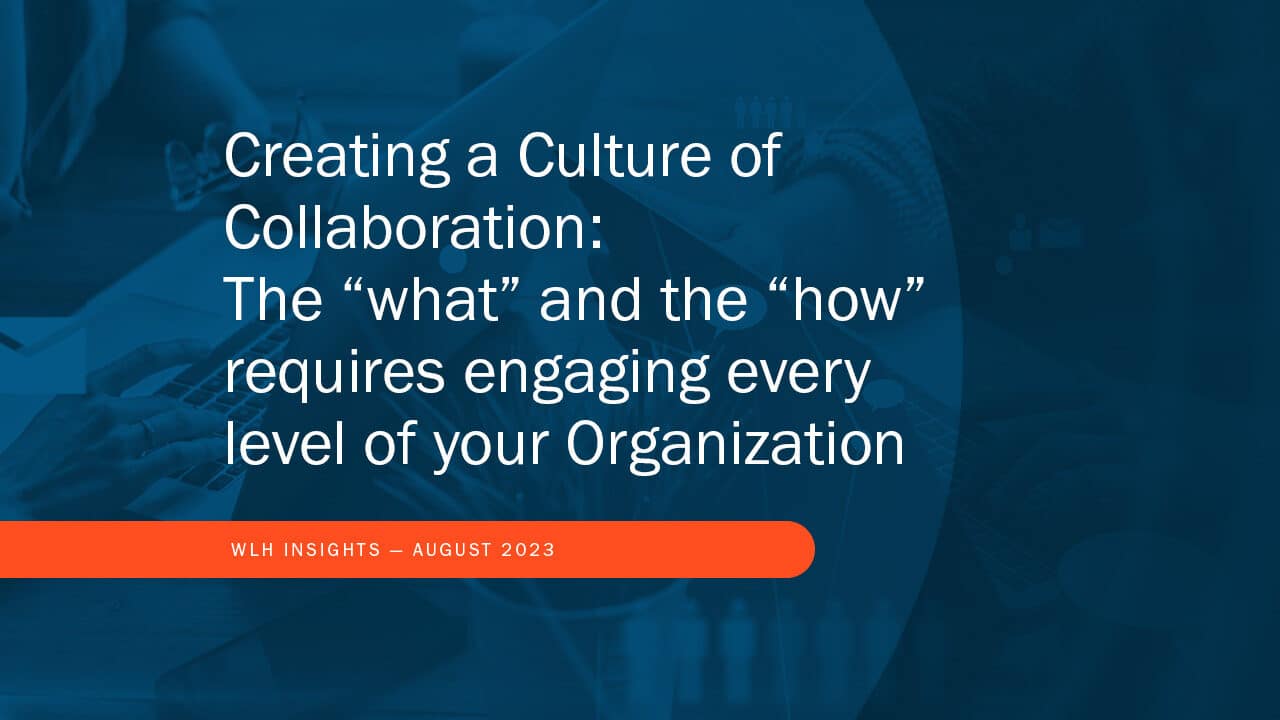Healthcare delivery is complicated with so many stakeholders across large, organized customers involved in treatment and prescribing decisions. For this reason, most pharmaceutical or life sciences field employees find it challenging to connect their day-to-day actions with eventual patient outcomes. However, when field teams are collaborating, coordinating, and communicating effectively, their actions can both directly or indirectly impact patients receiving access to critical medicines and treatment. For example, teams collaborating can overcome barriers related to helping caregivers deal with patient pre-authorizations or ensuring specialty pharmacies deliver needed medicines in time for treatment plans.
Even though many organizational leaders say that collaboration is critical, it is still one of the biggest areas for improvement in any organization. Below are common challenges that are evident at most pharmaceutical and life sciences companies at the organizational, team, and individual levels. When companies take an organizational approach to address these challenges, then field teams understand both “why” collaboration is important and “how” to more effectively collaborate, coordinate, and communicate. This approach can help to establish a culture of collaboration.
Below are some challenges for collaboration, coordination, and communication:
Organizational Challenges:
- Competing priorities and lack of alignment among different business units and functions.
- Limited information sharing due to system configurations and lack of access to important account-related data.
- Performance management and reward processes that focus on individual behaviors rather than reinforcing collaborative efforts.
Team Challenges:
- Variability in how effectively account teams work together due to a lack of specific guidance on what effective collaboration looks like.
- Strained resource allocation for critical roles due to high geography and account loads.
- Lack of visibility and knowledge of account activity leading to coordination failures.
- Lack of role clarity and processes in place to pull in the appropriate resource(s).
Individual Challenges:
- Difficulty shifting from a territorial mindset to a collaborative one, especially for those who have worked independently for a long time.
- Varying attitudes toward collaboration within the workforce, with some being highly collaborative and others less inclined to work in a team.
- Personal conflicts and relationship concerns which may hinder collaborative efforts.
The difference between organizations that excel at collaboration, coordination, and communication and those that do not is their ability to establish a culture of collaboration and embed best practices into the fabric of how they operate.
Below are best practices for collaboration, coordination, and communication at all levels of an organization:
At the Organizational Level:
- Articulate and emphasize the business case for collaboration, showing how it leads to better results, increased employee engagement, and efficient resource allocation.
- Showcase successful examples of collaboration and define what “good” collaboration looks like in the context of the organization.
- Define integrated account planning processes and conduct regular business reviews.
- Allocate dedicated resources to integrated account planning efforts.
- Leverage technology to facilitate information sharing and access to critical data.
- Ensure that performance management measures collaborative behaviors and the achievement of shared goals.
At the Team Level:
- Clarify roles and responsibilities within the account team, especially regarding account leadership expectations.
- Establish shared goals and objectives for the team to align efforts.
- Create a team charter that outlines expectations and conduct regular account plan reviews.
- Provide tools and resources that support information exchange and virtual working conditions.
At the Individual Level:
- Align on shared goals and objectives to encourage cooperation.
- Prioritize information sharing within the team and account.
- Proactively consider who else needs to be informed or involved in decision-making.
- Look for ways to increase access to resources and leverage existing relationships.
- Address personal conflicts constructively and seek support from others if needed.
- Provide coaching and support from managers to develop collaboration skills and behaviors.
Organizations that embed collaboration best practices into the fabric of their daily work make the connection for many different functions, teams, and individuals to how their actions contribute to company productivity and to bring solutions to healthcare customers.
